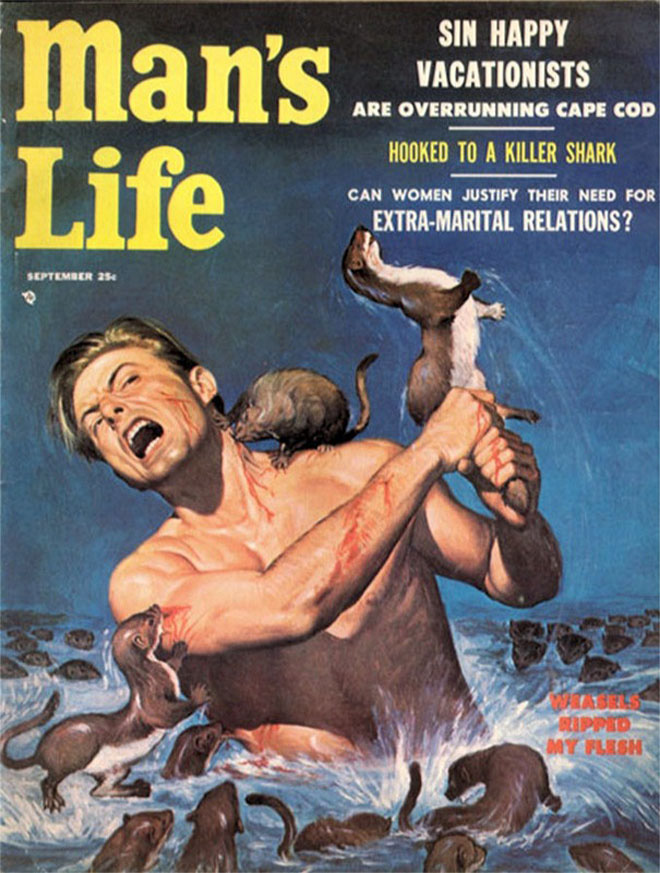Arguably the most unrealistic thing going on here is that smithing normally seems to be a solo operation, but then, all Norsemen being cultivators probably changes the biggest reason why that's true- namely, that pounding on pieces of metal with a hammer all day is exhausting.
In fairness, we have a slightly skewed perspective because we're a really good smith. Most people probably don't do nearly as much of it as we do...the basic Skills (Armorcraft, Weaponcraft, and Housecraft) only allow for repairs, with Skill-Tricks needed to actually make items...I don't think most Norsemen actually have too many of those. Maybe the Household one in order to make, like, nails and stuff, and that's it.
Sort of like my joke about how Norse cattle ranching is radically changed by the fact that any Norseman worth his salt is strong enough to knock an angry bull on their ass with a good swift punch to the face.
(Yes, yes, it's not proper to hit another person with your bare hands, but an animal? Surely that's a different story.)
Monsters and animals are fine to punch per Imperial Fister. So is anyone 'outside the law'...only with other Norsemen is it an insulting and thus dishonorable move. Stigmar was punching Troll-Men to death in our last fight, for instance.
Also, Deadman, if you wouldn't mind another "Skippy learns how the game system works" session, is there a reason why in the current plan we're putting 3 Orthstirr and not 4 into our Hamr, when it says on our character sheet that it's "4 Orthstirr to Max"? Is this one of those things where we deliberately don't want to max it out yet for accounting purposes, or have I (probably) got some other misunderstanding?
Uri's correct here. Adding a level of Odr Infusion reduces that number directly. It effectively 'fills' one Orthstirr available to put into Hamr permanently. The same with anything else we Infuse. Infusion, in theory, eventually replaces the need to invest Orthstirr into things at all, though in practice we probably won't ever hit that point.
Also also, I think I get the concept of investing Orthstirr into our stats, but when it says "Requires (122) more successes to rank up" for our Hamr what does this mean? For the Tricks there's a similar thing, which I'm guessing is about training them up, but I'm less sure about Hamr - is it just two different ways of increasing the rank? Or are they doing different things? Does investing Orthstirr in our Tricks also rank them up without needing to train them, or is that doing something different as well?
Uri's also basically correct here. To expand on this a tad, there are two things we need to do with attributes and skills.
1. We need to empower them. Every turn, we need to invest Orthstirr into them or we can't actually use them (if we had never gained Odr and invested no Orthstirr into, say, Hamr we would roll 1d6 for all Hamr rolls regardless of our actual Hamr). All stats need to be powered by Orthstirr to function. Odr Infusion is effectively a 'permanent Orthstirr' investment for this purpose and thus makes that unnecessary (in addition to other bonuses varying by the stat in question, check out my Odr mechanics post in the Informational section for more details).
2. They must be trained in order to be increased. This increases the amount of Orthstirr we're allowed to invest (ie: we are allowed to invest 4 Orthstirr into Dodge right now, if we increase it's level by 1, we are allowed to invest 5), which makes the dice pool larger by 1d6, but Orthstirr investment doesn't train them in and of itself. So we need to roll 122 successes on Training Dice to raise Hamr to 8. It's...gonna be a while. It'd likely be almost a year even if we dropped literally everything else, and that would not be the best use of our training time.
To raise stats, you simply invest X Training dice into a particular thing, roll them, and you get as many successes as you roll in progression (ie: if we invested 10 Training Dice into Hamr and rolled 7 successes, it would now only need 115 to advance).
To go a bit into how Training Dice work, dice in this system (as Uri notes) have three results: a 1-2 is -1 successes, a 3-4 is 1 success, and a 5-6 is 2 successes. Results of exactly zero successes become 1 success as well (you need to go negative to completely fail). In practice, with high dice pools, this makes the technical average number of successes almost exactly 2/3 of the dice pool (it's a tad higher due to the 'zero equals a single success' rule, but that means little on high dice pools).
However, on a single die, that -1 means nothing, so a single die averages 1 success (it has three results, 0, 1, and 2, all equally likely), and thus faster progression total...for that reason, we started doing a lot of our Training in 1 die increments, and it was decided rather than rolling them (which was tedious) Imperial Fister mostly just consider 1 die used alone to equate to one success in progression. That's the 'slow and 'steady' progression method we use for a lot of Tricks and other stuff.
That is slow, though, and insufficient for some things, like Hamr for example. We'll need to invest, like, 30 dice a turn for 6 turns to raise that. We are putting one die towards it every turn just to reduce that a tad, not because it'll get there with just that. But eventually, for the stats or anything else headed above 5, we're gonna need to invest big piles of Training Dice...we just have a bunch of cheaper stuff to get right now that seems like a higher priority and are still individually less than 10 successes each (so...many...Tricks).

